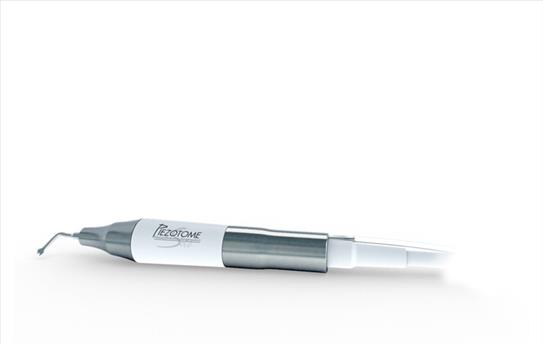
What is a piezo rhinoplasty ?
A piezo rhinoplasty is simply the technical name for an ultrasonic rhinoplasty. This is a new form of rhinoplasty which avoids a hammer and chisel technique to reshape the nasal bones. It provides more precision and reduces the inadvertent trauma and soft tissue damage which can occur in traditional rhinoplasty techniques.
Mr Chana has one of the largest experience of Piezo rhinoplasty having been one of the first surgeons in the UK to have adopted the technique. He has been featured numerous times in the press as an expert in rhinoplasty and as being one of the first to introduce this technique in the UK.
How does Piezo rhinoplasty work ?
This form of rhinoplasty avoids hammers and chisels which are a relatively crude from of instrumentation. Instead a piezotome is used to reshape and reduce the nasal bones. A piezotome is a specialized instrument which transmits ultrasonic energy to the bone without damaging any surrounding soft tissue. Since the energy is transmitted specifically to the bone there is no collateral damage which means soft tissue swelling and bruising is reduced. The piezotome device comes with various attachments shaped in the form of sculpting tools which are used to reshape the bone.
What is the advantage of Piezo rhinoplasty ?
This is a more gentle technique which affords the surgeon greater precision. There is less swelling and bruising and some patients find there is hardly any bruising at all. A hammer and chisel technique can result in some splintering of the bone and inadvertent fractures. This is avoided with a piezotome. It also allows for sculpting in a way which is not possible even with fine rasps. In some cases breaking of the nasal bones can even be avoided.
The technique also lends itself to the modern trend of preservation rhinoplasty which is a philosophy of reshaping rather than a destructive removal of tissue during rhinoplasty which is so common in old fashioned techniques. The piezotome can be used to reshape the bone without breaking the bone but also can be used for preservation of the nasal bridge.
Am I suitable for a Piezo rhinoplasty ?
The instrumentation is designed for nasal bone sculpting Therefore only those patients who require a reduction or adjustment to the nasal bones are suitable. This can include bony hump reduction, adjustment of bony deviations or bone irregularities and narrowing the bony midvault.
The technique is not suitable for nasal tip and cartilage adjustments which are usually carried out using suture and graft techniques. The piezotome will not cut or reshape cartilage since only the high density of bone allows the energy transmission. Therefore if you only require tip surgery the piezotome is not suitable
Another important factor to consider is that a piezo rhinoplasty needs to be performed using an open approach and cannot be used with a closed or intranasal approach. This is because the instruments are not long enough and direct visualization of the bones is required for the piezo bone sculpting. However, the advantages of using the piezotome for the rhinoplasty outweigh the presence of a minimal scar which is imperceptible.
Why are not all surgeons using Piezo rhinoplasty techniques ?
The technique is not widespread because surgeons many not be familiar with this advanced form of equipment and how to adapt and modify their standard rhinoplasty technique to incorporate the use of the Piezotome technology. Also the Piezotome equipment is considerably more expensive.
What is the recovery from a Piezo rhinoplasty ?
There is little or no pain following surgery. Also bruising is significantly reduced. A nasal splint is required in the usual way to keep the nasal bones in position during the initial healing period. This splint is removed approximately 1 week later. At the time of splint removal the majority of patients will discover minimal or no bruising. The photo here shows an example of the lack of bruising visible at one week as soon as the nasal cast has been removed.
However, it should be remembered that since a number of different structures are altered during the rhinoplasty it can still take approximately a year to see the final result after full healing. Unfortunately there is no fast track to the final result but certainly there are advantages in the early recovery period and in the precision of the technique which provides benefits in the quality of results obtained.
The photo below show no bruising at 1 week when the nasal cast is removed with the patient being ready to return to work.
What are the typical results ?
This is the same patient at 9 months following surgery.

Watch this video of a patient journey undergoing a piezo rhinoplasty
The before and after photos below are the same patient in this video

What are the risks ?
The risks of rhinoplasty using the Piezotome are the same as any general rhinoplasty and you can read more here
Making an enquiry and arranging a Consultation
To make an enquiry about Piezo-rhinoplasty please contact the office via the contact form below, or telephone. Usually two consultations are required and Mr Chana will spend all the necessary time discussing your concerns and arriving at a plan to meet your expectations. In this way your decision is not rushed and you should have all the information to make a fully informed decision about whether the procedure is right for you.

